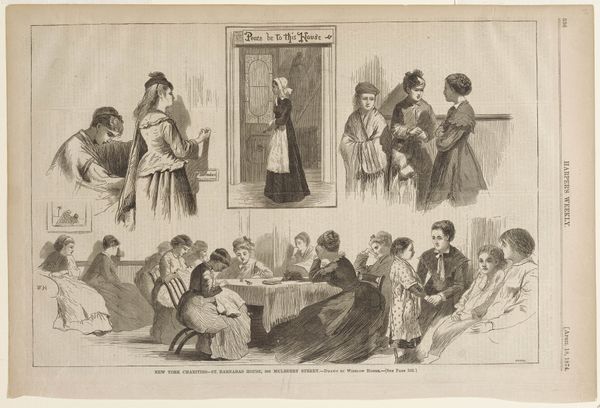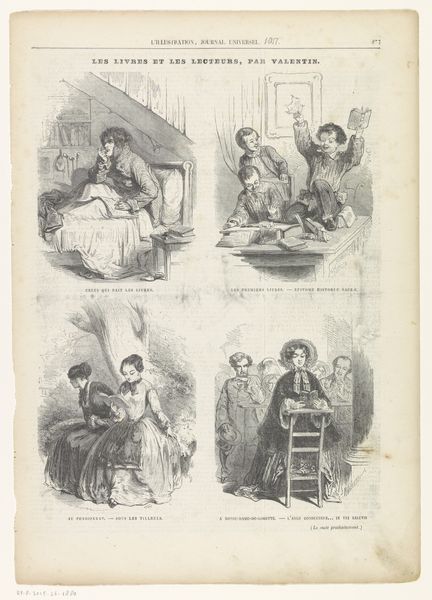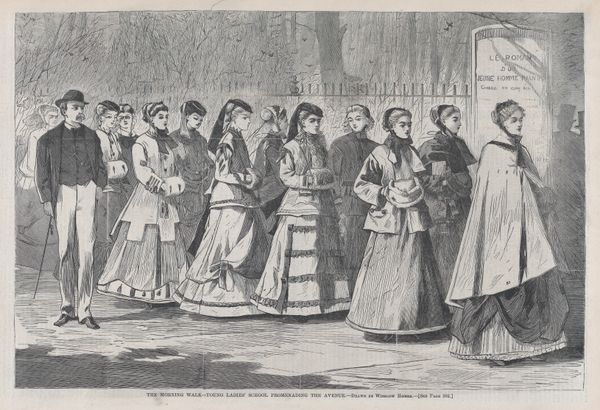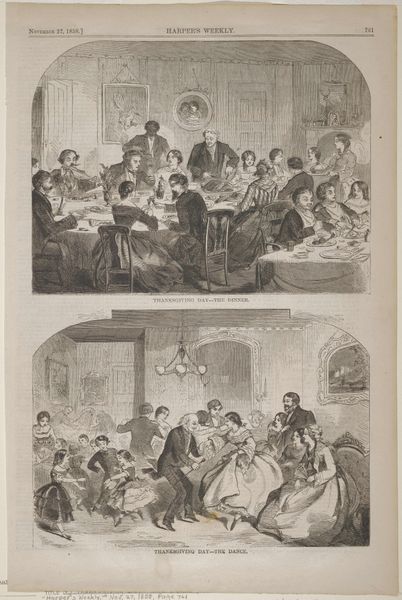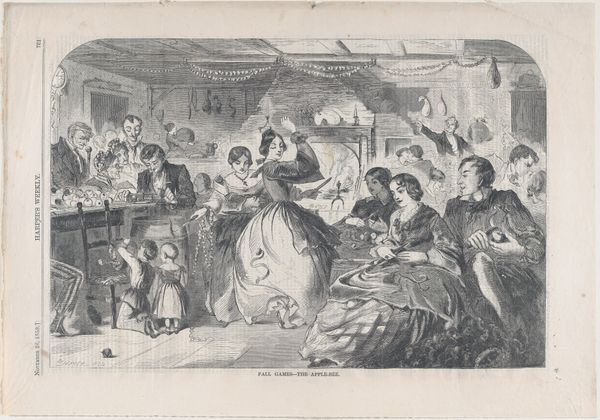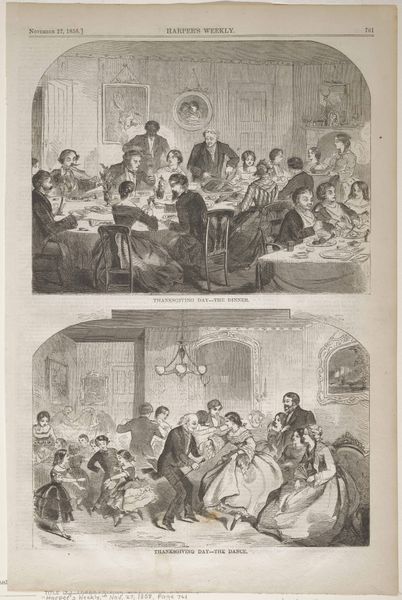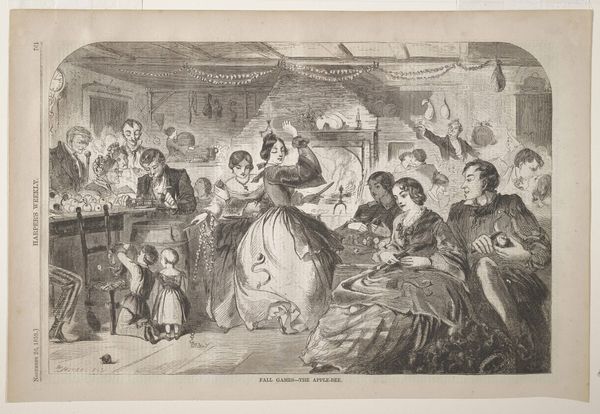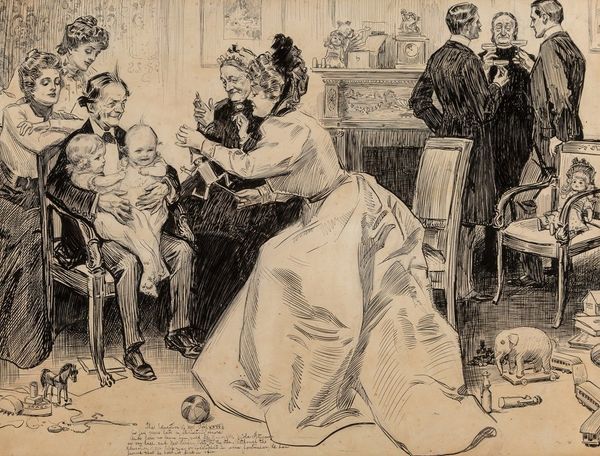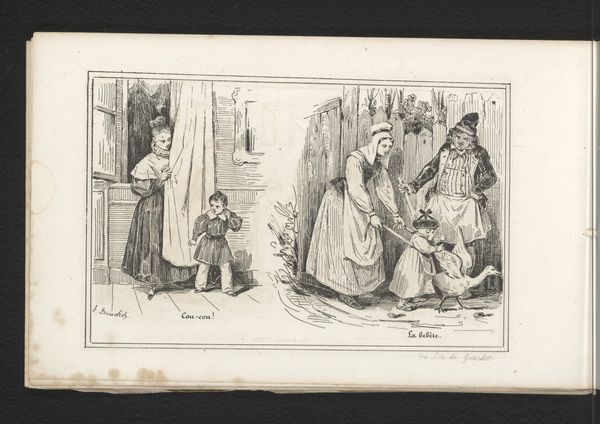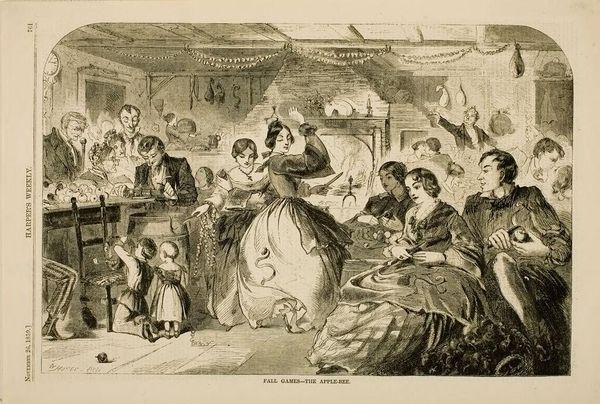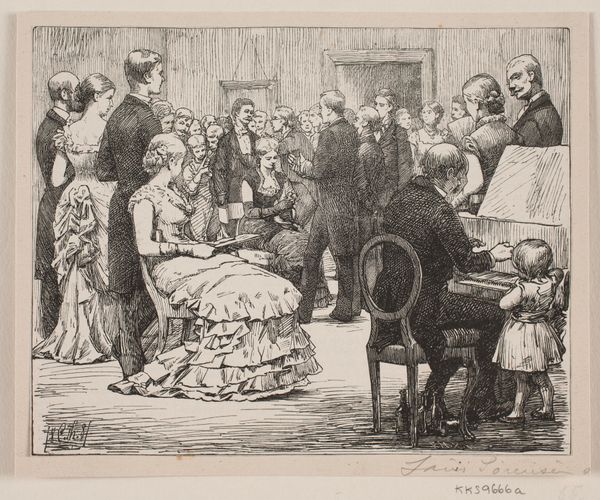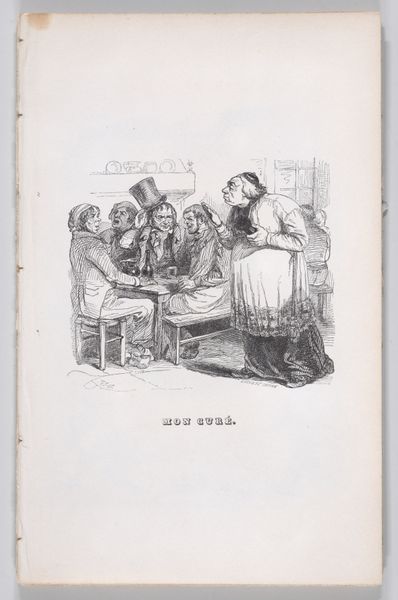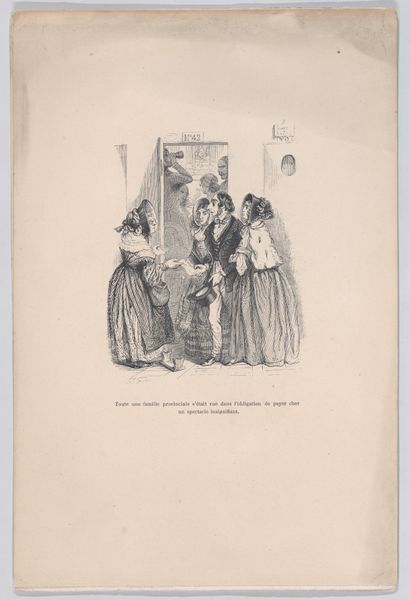
New York Charities – St. Barnabas House, 304 Mulberry Street (from "Harper's Weekly," Vol. XVIII) 1874
0:00
0:00
drawing, print, etching, pencil
#
portrait
#
drawing
#
16_19th-century
#
narrative-art
# print
#
etching
#
social-realism
#
group-portraits
#
pencil
#
genre-painting
#
history-painting
#
academic-art
#
realism
Dimensions: image: 9 1/8 x 13 3/8 in. (23.2 x 34 cm) sheet: 10 11/16 x 15 7/8 in. (27.1 x 40.3 cm)
Copyright: Public Domain
Curator: Here we have Winslow Homer's "New York Charities – St. Barnabas House, 304 Mulberry Street," a print dating from 1874. It appeared in "Harper's Weekly." Editor: It hits you with the weight of a world, doesn’t it? A contained, quiet world, but so many stories pressed onto the page in grayscale. It almost feels… biblical? Like an Old Testament illustration. Curator: The composition is divided into vignettes, creating a narrative tapestry of life within this charitable institution. Note how Homer uses line and shadow to articulate distinct spaces and psychological states. Editor: It's almost claustrophobic, this compression of different moments. And the figures… they seem so separate, contained in their own bubbles, even when clustered together. Except for that nun-like figure near the door. Her positioning brings me tranquility! She looks peaceful. Curator: The academic realism captures the somber atmosphere effectively, highlighting the social inequalities of the time. Each figure, though part of a larger group, is rendered with individual detail. Editor: It makes you wonder about their individual circumstances, doesn’t it? Who are these women? What brought them here? There’s such a strong sense of quiet desperation clinging to their clothes! I almost can hear the wind's echo around those figures depicted at the center. Curator: Homer is less concerned with idealization and more invested in documentary observation, which aligns with the principles of social realism that informed much of his work during this period. Editor: Still, there's a detached observation about the whole thing. Are we meant to sympathize or just... observe? It’s powerful stuff, hitting notes on social injustice as loudly as the 21st century still does! Curator: Indeed. Homer masterfully employs compositional strategies, such as the use of framing and varying figure groupings, to construct meaning and draw attention to the dynamics within this environment. The gaze, the postures… everything contributes to a sense of internal world. Editor: A silent symphony of hard choices. It feels weird knowing this once appeared in a magazine... Now I'll be thinking all day about the realities etched into its monochrome depths.
Comments
No comments
Be the first to comment and join the conversation on the ultimate creative platform.

